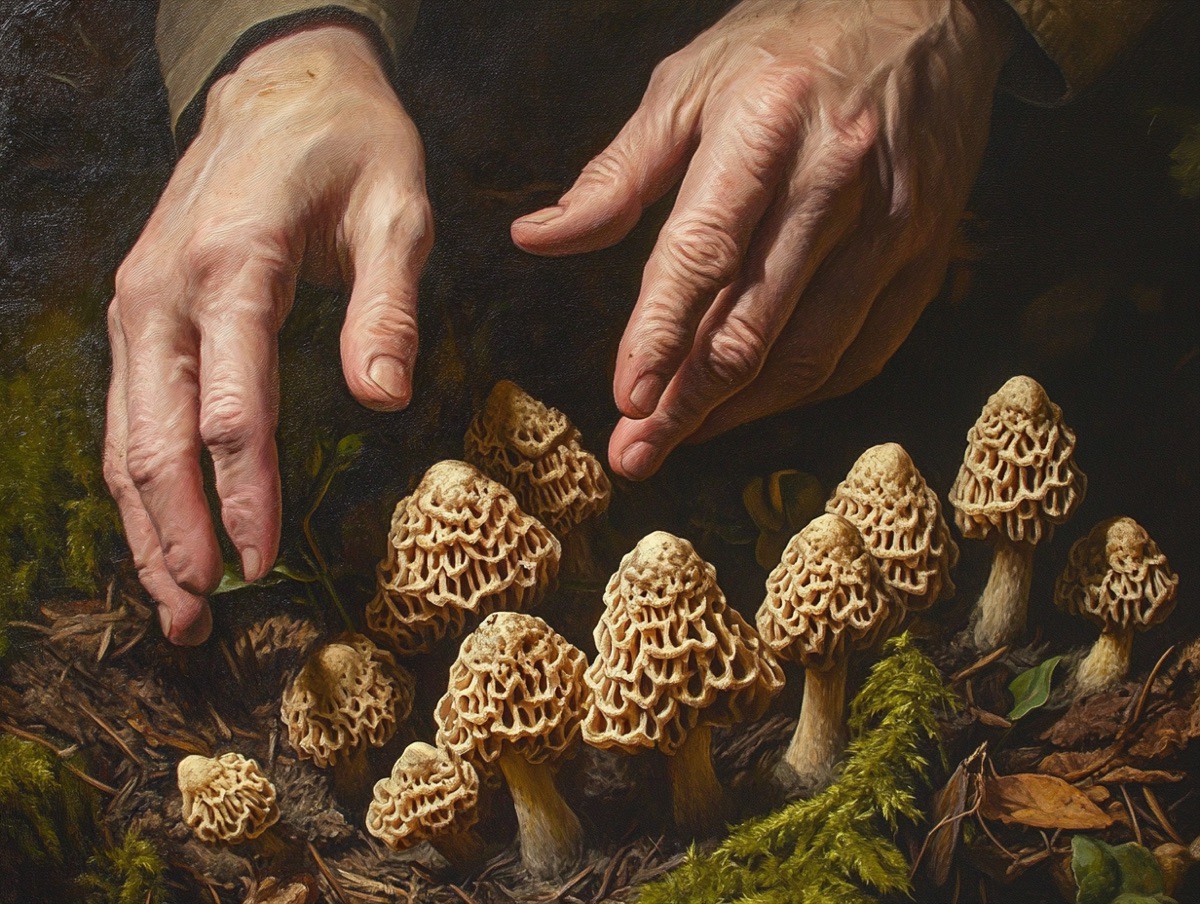1. Time It Right
- Spring is Prime Time: Morels typically emerge between March and June, depending on your region. Watch for consistent daytime temps in the 60s°F (15–20°C) and nights above 40°F (4°C).
- After the Rain: A warm rain followed by a few sunny days is often the perfect trigger for a morel bloom. Moisture is key, but avoid overly soggy ground.
2. Know Where to Search
- Tree Companions: Morels often grow near certain trees—especially around dying or dead elm, ash, apple, sycamore, and tulip poplar. Look for areas with leaf litter and decaying wood.
- Disturbed Ground: Burned forests and recently logged areas are hotspots, especially the spring following the disturbance.
- Slope Savvy: Early in the season, focus on sunny, south-facing slopes. As temperatures rise, shift your attention to cooler, north-facing slopes.
3. Bring the Right Tools
- Mesh Bag or Basket: This not only keeps your mushrooms fresh but helps disperse spores as you hike.
- Knife or Scissors: Cut the stem cleanly at the base to avoid damaging the underground mycelium, ensuring future harvests.
- Walking Stick or Pole: Useful for gently parting underbrush and leaf litter without disturbing the area too much.
4. Master Morel Identification
- True Morels: Look for honeycomb-like caps with deep pits and ridges, and a completely hollow interior when sliced lengthwise.
- Avoid False Morels: These imposters may look similar but have irregular, wavy caps and are often not hollow. Some are toxic, so when in doubt, don’t eat it.
5. Be Patient and Observant
- They’re Camouflaged: Morels blend into the forest floor. Train your eyes by slowly scanning for their texture and silhouette.
- Find One, Find More: Morels often grow in clusters. When you spot one, search carefully nearby—there are likely others!
6. Watch the Weather
- Ideal Conditions: A stretch of mild, moist weather is your best friend. Check forecasts and time your outings around rain showers followed by warmth.
- Soil Matters: Look in damp, well-drained soil. Avoid swampy areas—too much water can deter growth.
7. Learn from the Community
- Tap Into Local Knowledge: Join mushroom hunting clubs, social media groups, or forums to swap tips and locations (if folks are willing to share!).
- Track Sightings: Use mushroom hunting apps or online maps that crowdsource morel sightings to get an idea of where and when they’re popping.
Bonus Tips
- Respect the Land: Always ask permission on private property, and follow Leave No Trace principles.
- Know the Laws: Check local regulations—some public lands have limits on how many mushrooms you can harvest.
- Safety First: Bring a buddy, stay aware of your surroundings, and let someone know where you’re going.
